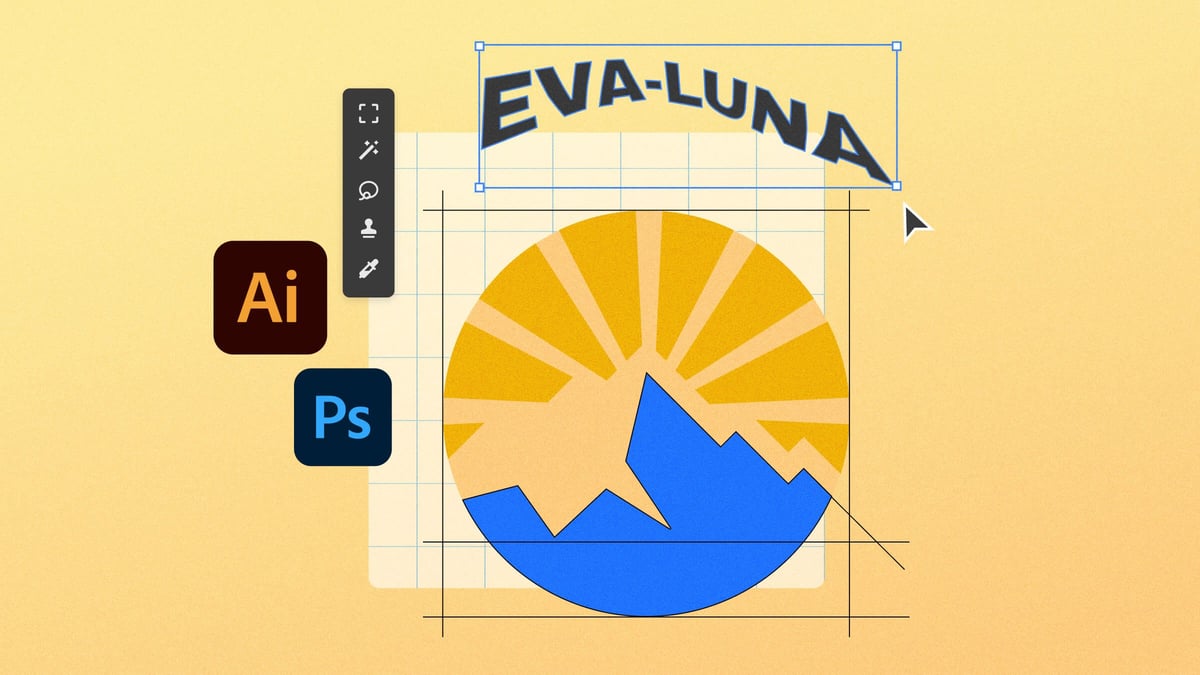How to Design a Logo: 6 Tips for Creating a Killer Logo
Whether you’re designing a logo for your business or creating branding for a client, here are 6 foolproof tips for designing an eye-catching logo.
Designing an eye-catching and professional logo requires a thoughtful blend of creativity and strategy. The logo should embody the essence of the brand while captivating the viewer’s attention.
The key is to create a visually striking symbol or typography that leaves a lasting impression. A careful selection of colors, shapes, and fonts can evoke specific emotions and convey the brand’s identity.
It is crucial to strike a balance between simplicity and uniqueness, ensuring the logo is easily recognizable and memorable.
Additionally, attention to detail is paramount, as even the slightest modification can significantly impact the overall design.
By meticulously crafting each element and aligning it with the brand’s values and target audience, a logo can become an emblem of professionalism that resonates with viewers and leaves a remarkable imprint.

A logo is so much more than just an eye-catching design – it’s the essence of your branding. Your logo visually represents your brand and should express your business’s essence, mission, and identity. Why tell people what you do when you can show them?
Regarding good logo design, there are a few simple but key rules to remember. We spoke to Janine Heinrichs, graphic designer and author of Janine Designs Daily, to share her expert advice, knowledge, and handy logo design tips.
Whether you’re DIYing a logo for your freelance business or creating a full-fledged branding suite for a client, creating a killer logo isn’t as complicated as you might think – it boils down to a few fundamental principles. From memorability and responsive design to top tools and templates, here are Janine’s foolproof logo design tips.
1. Keep it Simple while designing a logo

When it comes to logo design, keep it simple. Clean and uncluttered logos are more easily recognizable by your audience and convey an immediate sense of who you are. Generally, keep your logo as minimal as possible to let your brand’s personality shine through.

As you’ll be using your logo across various platforms, the finer details of an overcomplicated logo can quickly disappear across multiple sizes and formats. A strong, timeless logo should have a few key elements that are easily recognizable and clearly convey your message, so take a step back and remove any unnecessary design elements.
Available on
- Logo Mockupby sagesmask in Product MockupsGet
- Simple Tailor Logoby Slidehack in LogosGet
- Green Logo Mockupby sagesmask in Product MockupsGet
2. Make it Memorable while designing a logo








Your logo should make a strong statement and send the right message. You want people to recognize your brand immediately, so making your logo unique and memorable is crucial. Think of how you want your audience to perceive your brand and how you want them to remember you at just a glance.
“When creating a logo, it’s important to ensure the design is unique and memorable while accurately representing the business,” says Janine. “Drawing inspiration from nature or other existing designs can be a good place to start.”
Create a logo that stands out by using simple design elements (such as fun shapes, mascots, or customized typography). While jumping on logo trends can be great for inspiration and staying relevant, logos that play it safe can be easily missed or dismissed in this overly branded world, so do things differently.

To get some original logo inspiration, search for logos in your industry, and try to avoid any trends or patterns you notice. For example, tech logos often feature globes and electronics, and dentistry is overflowing with teeth or smiles. While all these motifs clearly communicate what the businesses are about, they tend to blend together. Dare to be different!
Available on
- Logo Mockupby Morad in Product MockupsGet
- Grim Logo Templateby Ijajil in LogosGet
- Ofuro Kaeru Logo Templateby Ijajil in LogosGet
3. Consider Design Principles




Every great logo is built on a structure that holds up the design and creates balance and visual interest. Using design principles such as balance, proportion, scale, and symmetry in your logo design process will result in a more professional and visually pleasing end product and give you a better understanding of design rules and how to break them.
“It’s so important to pay attention to scale, colors, and typography,” says Janine. “These factors will affect the end product.”
There are many design principles to consider when designing a logo, such as balance, unity, contrast, emphasis, and repetition, to name a few. While you don’t need to incorporate all of these elements into your design, figure out which works best for the brand you’re designing for and can help you communicate your message more effectively.
Available on
- Beat Logo Templateby Ijajil in LogosGet
- Digiplug Logo Templateby Ijajil in LogosGet
- Labyrinth Brain Logoby Ijajil in LogosGet
4. Design Your Logo for Multiple Mediums








Your logo will appear everywhere your brand is visible – such as your website, business cards, product packaging, and social media accounts. Because of this, your logo must maintain its integrity and serve the same purpose across all channels and mediums. When designing a logo, it’s essential to ensure it works in all situations. One way to achieve this is through visible contrast, but you can also integrate other branding elements, such as textures or patterns, to complement your logo in various iterations.
“Making sure the logo works in different sizes and on various mediums is essential,” Janine says. “A good logo should have visible contrast and clarity when viewed on-screen or printed. The logo should be exported in the proper format suitable for print (CMYK) and on screens (RGB) so that the brand colors are accurate for both mediums and the brand remains consistent.”
Available on
- So Flowery Branding Kit + Watercoloursby AgataCreate in LogosGet
- LRose Brand Kit Templateby 2sideswork in Print TemplatesGet
- Pre-made Logo ~ Branding Kitby helga_helga in LogosGet
5. Consider Your Target Audience while designing a logo








Your logo should reflect your brand – and also your audience. Your logo design should appeal to your target customers and contain elements that align with your brand, business, products, and your audience’s interests.
“Considering how the target audience may perceive the logo is key,” says Janine. “If you miss this step, the business may attract the wrong audience, which could be detrimental to sales.”
Understanding your prospective customers’ needs and how your audience perceives your brand can help you pinpoint a particular look, style, or personality for your logo based on what you want to portray. If you’re unsure, ask yourself what sets the brand apart from its competitors – or, better yet, ask your customers.

This competitive advantage could be authenticity, attention to detail, innovation, sustainability, efficiency, or something else – whatever your point of difference, show it in your logo.
Available on
- Recycle Nature Logoby yuanesei in LogosGet
- Two Peaks Logo Templateby Pixasquare in LogosGet
- Ecology Logoby yuanesei in LogosGet
6. Use the Right Tools for designing a logo








Creating a logo for your business can be intimidating, and knowing where to begin is difficult. Fortunately, there are some great tools to help you out. No matter your degree of experience or budget constraints, finding the right tool for your skills, goals, and business needs is essential.
On the one hand, if you have the design chops to create a custom logo, you can use Adobe Illustrator (vector-based) or Adobe Photoshop (raster-based). Both programs provide powerful logo-creation solutions with lots of flexibility and a wide range of tools. Illustrator is great for modern, flat logos, while Photoshop is ideal for the more distorted, edgy, grungy-looking logos.
Another popular option is Placeit, a web-based graphic design platform and logo maker. Envato Elements also has an expansive library of professional logo templates, making designing logos fast and easy.
Available on
- Logo Mockupby Morad in Product MockupsGet
- Logo Mockups Pack. Paper Edition. Vol.2by bulbfish in Product MockupsGet
- Beanie logo mockupby Sizimon-id in Product MockupsGet
And that’s a wrap! We hope you enjoyed these tips for designing a killer logo. While you’re here, don’t forget to check out our Logo Design Trends for 2023 and our logo design guide.
Do you find this article useful?
Related Posts
- DESIGNWedding Design Trends for 2023: From Rustic Elegance to Minimalist Modern
- DESIGNUltimate Design Portfolio Guide: How to Build a Creative Portfolio in 6 Steps
- DESIGNMeet the Experts: Pushing Design Possibilities Through Coding with Talia Cotton
- DESIGN10 Dynamic Font Trends for 2023: From Street Art Typography to Functional Serifs